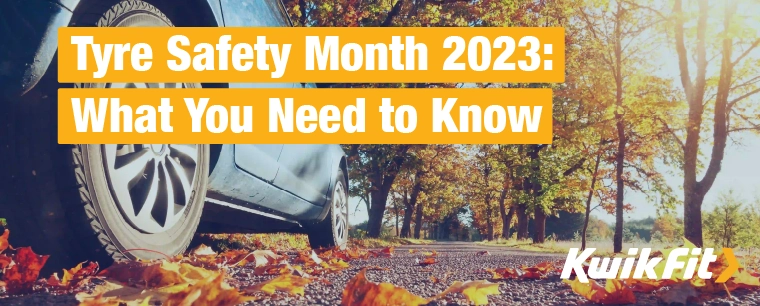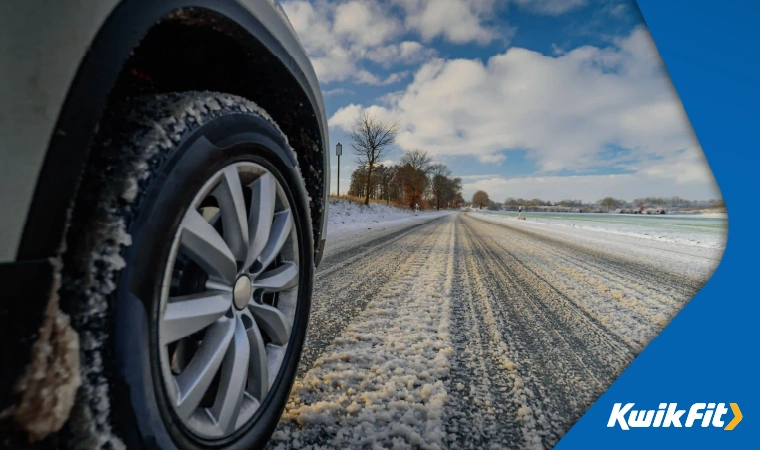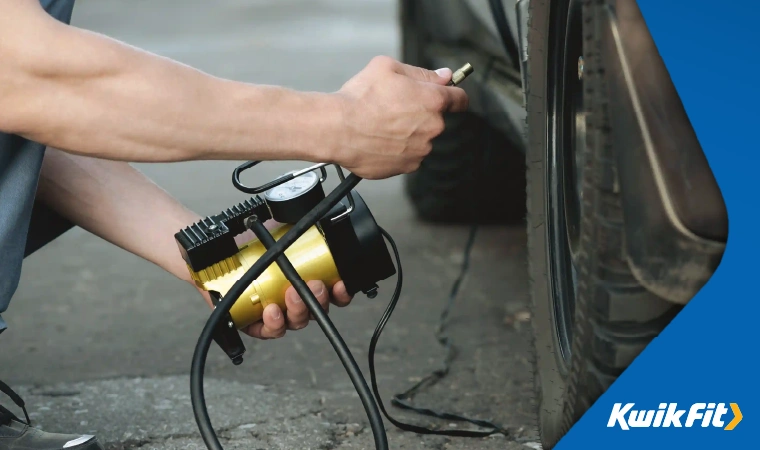Tyre Safety Month 2023: What You Need to Know
Jack Dreyer | Thursday 28th September 2023 1:00pm

October is Tyre Safety Month, an annual month-long awareness campaign created by the road safety charity TyreSafe to make Britainís drivers aware of the importance of tyre maintenance. As a TyreSafe member, weíre all too happy to back the cause!
Hereís everything you need to know about tyre safety to see you through October and beyond.
Why is Tyre Safety Month important?
Tyre safety is important year-round, regardless of awareness campaigns, because tyres are easily one of the most crucial elements of your vehicle alongside brakes. If your engine stops working, if your lights blow, if your windscreen wipers break, then youíll be in trouble, certainly, but you can still slow down and get your car to safety quite quickly.
Without suitable brakes and tyres with enough tread depth, you can be in deep water very quickly. It becomes almost impossible to stop safely on any roads with inclines. But, assuming your brakes are working fine, the difference between worn tyres and tyres with enough tread depth is night and day.
Whatís more, the most crucial thing to keep in mind with tread depth is that it isnít about whether youíll be able to stop or not but how much distance your car will travel before stopping. To put this into perspective, a car driving at 30mph in wet weather with 3mm of tread depth will take 35% more distance to stop compared to one with brand new tyres fitted. This increases almost exponentially when the tread depth gets below 3mm.
Whatís even more, if you have a tyre on one side of your car thatís significantly more worn than the tyres on the other side, sudden braking can cause your car to spin around Ė creating a potentially catastrophic situation.

Findings from the new TyreSafe Survey
Throughout 2023, TyreSafe conducted a survey on hundreds of thousands of car and light commercial vehicle tyres to assess the current state of tyre conditions on Britainís roads.
The findings are staggering.
A whopping 17% of tyres surveyed throughout 2023 were found to be below the minimum legal tread depth of 1.6mm. This is down from 27% in 2016 but the researchers believe the relative lack of driving throughout the Covid-19 pandemic is playing a large part in the reduction of tyre wear.
More importantly, 40% of studied tyres fell between the 2mm-1.6mm tread depth zone. This means that, combined, 57% of cars and light commercial vehicles on the road are being driven with dangerously low tread depth!
We always recommend tyres be replaced when under 3mm of tread depth because, below this point, they become significantly less effective at clearing water from the ground and maintaining grip on the road surface for stopping.
What you need to know to keep your tyres safe into winter

Our blog section has tons of really useful information on everything related to tyres (and, actually mostly anything to do with cars!).
The main thing you need to keep in mind is tread depth. The legal minimum is 1.6mm but, as weíve said above, you should really consider replacing a tyre after the tread depth gets below 3mm. But itís not just tread depth you should keep tabs on.
Going into autumn and winter, the roads get very wet and degraded Ė so itís crucial to stay on top of tyre maintenance. Here are some great resources:
- How to check your tread depth using the 20p test
- How to keep an eye on and avoid tyre damage
- How to check tyre pressure and make sure itís correct
- Everything you need to know about potholes
- Puncture repair information
- Everything you need to know about wheel balancing and alignment
- The difference between directional and asymmetric tyre tread patterns
Correct tyre pressure for safer driving & better performance
We - like TyreSafe - have always been really keen to emphasise the importance of correct tyre inflation. Not only does it result in an all-round safer driving experience, but also delivers significantly improved MPG (miles per gallon) ó and itís really easy to check.
When your tyres are properly inflated, youíll find that your vehicle handles much better ó meaning youíll be safer when navigating corners, accelerating, and braking. Of course, this is important year-round, but undoubtedly all the more crucial in winter when roads are often wet and icy.
As for braking, multiple factors can affect your stopping distance, and the forces are working against you in the colder months. Inflating your tyres properly ensures they can work more effectively to bring you to a stop when you pump the brakes.
Itís worth noting that all of this also factors into your overall MPG (or your EVís miles per KwH). Flat or over-inflated tyres mean your car has to work harder and, ultimately, use more fuel. Youíd be amazed just how much of an impact tyre pressure can have on your fuel consumption!
Be sure to check your tyresí recommended PSI using our tool.
Tyre safety with Kwik Fit
For anything else related to auto industry news, car maintenance, and general repair tips, head over to our blog.
If youíve noticed that your tyres need replacing or youíre not sure if they do, get in touch with the experts at your local Kwik Fit centre for a free assessment.
Any facts, figures and prices shown in our blog articles are correct at time of publication.
Featured Articles
Is it Illegal to Drive With One Headlight?
Saturday 19th July 2025
Wondering if itís illegal to drive with one headlight? Learn about the safety risks and penalties of illegal blown bulbs and why you should fix them promptly.
Air Con in EVs & Hybrids: Experts Answer Your Questions
Monday 30th June 2025
Does air con drain EV batteries? Can you use the air con while charging an electric car? Find out the answers to these questions & more from Kwik Fitís experts.
Why Is Your Car Making a Noise? Fixes & Tips
Friday 13th June 2025
When your car starts making unexpected noises, it can certainly be quite disconcerting; it may be nothing to worry about, but hereís what you need to know.









